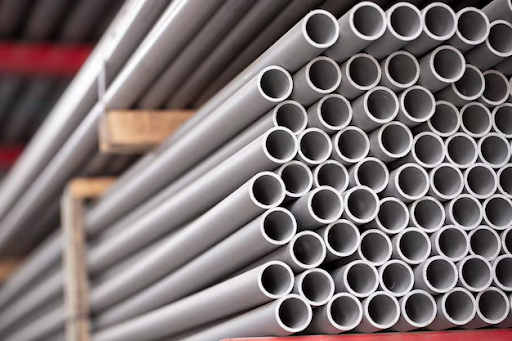Heavy wall stainless steel tubing is essential for numerous applications, offering strength, durability, and resistance to corrosion. Selecting the appropriate tubing for a specific project can be challenging due to the variety of factors that must be considered. This article provides a comprehensive guide to help you make an informed decision.
Understanding Your Project Requirements
The initial step in selecting the right tubing involves understanding the specific requirements of your project. This understanding helps narrow down the choices and ensures you choose the most suitable option. When you need to buy heavy wall stainless steel tubing, it is crucial to consider the intended application and the environment in which it will be used. These considerations will influence the type of stainless steel, the required strength, and the appropriate wall thickness.
Heavy wall stainless steel tubing is often used in industries such as oil and gas, chemical processing, and power generation, where high pressure and corrosive environments are common. Knowing the specific needs of your project will guide you in choosing the right tubing that can withstand these conditions.
Material Grade And Specifications
Choosing the appropriate material grade is vital to ensure the tubing performs well under the given conditions. Different grades of stainless steel offer various levels of corrosion resistance, strength, and temperature tolerance. Common grades include 304, 316, and 321, each with unique properties.
Grade 304 is known for its excellent corrosion resistance and is widely used in general applications. Grade 316, with added molybdenum, offers enhanced corrosion resistance, making it suitable for marine and chemical environments. Grade 321 is stabilized with titanium, providing superior resistance to intergranular corrosion and high temperatures.
When selecting a grade, consider the specific requirements of your project. For example, if the tubing will be exposed to harsh chemicals or seawater, Grade 316 would be a better choice due to its superior corrosion resistance.
Determining The Right Wall Thickness
The wall thickness of the tubing plays a critical role in its ability to withstand pressure and mechanical stress. Heavy wall tubing offers greater strength and durability compared to thinner-walled options, making it suitable for high-pressure applications.
To determine the appropriate wall thickness, consider the operating pressure, temperature, and mechanical loads the tubing will be subjected to. Industry standards and engineering calculations can help guide this decision. For instance, the ASME (American Society of Mechanical Engineers) provides guidelines for determining the suitable wall thickness based on the internal pressure and the material’s properties.
Additionally, consulting with experts or using specialized software can help ensure the chosen wall thickness meets the project’s safety and performance requirements.
Surface Finish And Quality
The surface finish of stainless steel tubing can significantly impact its performance and longevity, especially in applications where hygiene and cleanliness are critical. Surface finishes range from mill finish to highly polished, with each offering different levels of smoothness and resistance to corrosion.
A smoother finish reduces the risk of corrosion by minimizing surface imperfections where contaminants can accumulate. In industries like food and beverage, pharmaceuticals, and medical devices, a polished surface finish is essential to meet hygiene standards and prevent contamination.
When selecting tubing, consider the surface finish that best suits your project’s needs. For instance, a polished finish may be necessary for applications requiring high cleanliness, while a standard mill finish might suffice for less demanding environments. For more insights on maintaining stainless steel equipment, check out this blog post on stainless steel maintenance tips.
Ensuring Compliance With Industry Standards
Compliance with industry standards is crucial to ensure the safety, reliability, and performance of heavy wall stainless steel tubing. Various standards, such as ASTM (American Society for Testing and Materials), ASME, and ISO (International Organization for Standardization), provide guidelines on material composition, mechanical properties, and manufacturing processes.
When selecting tubing, verify that it meets the relevant standards for your industry and application. This verification ensures the tubing has undergone rigorous testing and quality control measures, providing confidence in its performance.
Additionally, working with reputable suppliers who adhere to these standards can help guarantee the quality and reliability of the tubing. For instance, this blog post on supplier selection tips offers valuable insights into choosing reliable suppliers who comply with industry standards.
Budget Considerations And Cost-Effectiveness
While it is important to choose high-quality tubing that meets all the necessary specifications, budget considerations also play a significant role in the decision-making process. Finding a balance between quality and cost-effectiveness ensures you get the best value for your investment.
When evaluating costs, consider not only the initial purchase price but also the long-term expenses related to maintenance, replacement, and downtime. Investing in higher-quality tubing may result in lower overall costs by reducing the frequency of replacements and maintenance needs.
To maximize cost-effectiveness, compare prices from multiple suppliers, and explore bulk purchasing options. Additionally, consider working with suppliers who offer value-added services such as custom cutting, polishing, and testing, which can save time and resources in the long run.
Conclusion
Choosing the right heavy wall stainless steel tubing for your project involves a thorough understanding of the project’s requirements, selecting the appropriate material grade and wall thickness, considering surface finish and quality, ensuring compliance with industry standards, and balancing budget considerations. By following these guidelines, you can make an informed decision that ensures the success and longevity of your project.
Remember to consider the specific needs of your application, consult with experts when necessary, and choose reputable suppliers to ensure you receive high-quality tubing that meets all your requirements. With the right selection, heavy wall stainless steel tubing can provide reliable and durable performance in even the most demanding environments.

